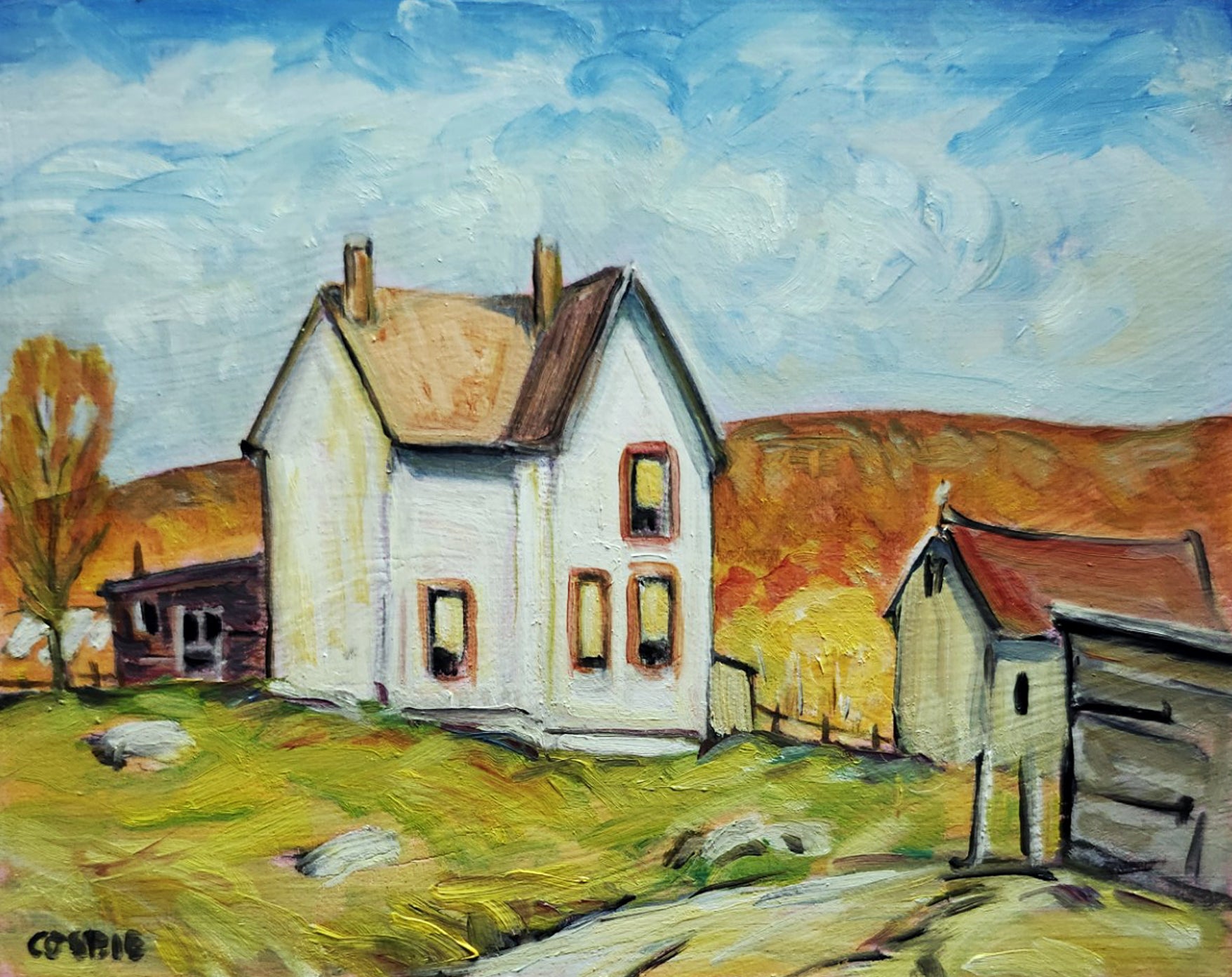Exploring All About Oil Paintings: An Overview to Recognizing Their Elegance and Worth
Oil paints have actually mesmerized audiences for centuries, providing a glimpse right into the imaginative proficiency of various ages. Their rich background is intertwined with cutting-edge methods and profound psychological expression. Recognizing the products and methods behind these art work can boost admiration. Furthermore, the market for oil paints provides chances for collection agencies and financiers alike. As one explores this fascinating globe, the inquiry emerges: what makes an oil painting absolutely important?
The Background of Oil Paint: A Trip Via Time
Although oil paint has roots that date back to old times, it really flourished throughout the Renaissance, when artists uncovered its versatility and abundant color possibility. Early instances can be traced to the 7th century, with techniques progressing notably throughout cultures. The medium came to be popular in Northern Europe in the 15th century, especially via the works of musicians like Jan van Eyck, who originated its usage for comprehensive realistic look and vibrant shades. This duration marked a separation from tempera paints, allowing for higher deepness and appearance. As oil paint spread, it affected countless artists, resulting in work of arts by renowned figures such as Leonardo da Vinci and Rembrandt. The tool's heritage continues, shaping the art world well into modern-day times.
Comprehending Oil Repaints: Materials and Techniques
As artists explore the world of oil paints, they run into a varied array of materials and methods that specify this medium. The main parts of oil paint consist of pigments, which provide color, and drying oils, such as linseed, that bind the pigments and help with application. Different additives can customize the paint's appearance and drying out time, boosting flexibility. Methods like glazing, where transparent layers are developed up, and impasto, which entails using thick paint, permit different aesthetic impacts. Furthermore, the usage of brushes, scheme blades, and also fingers can produce special appearances and coatings. Understanding these techniques and products makes it possible for musicians to fully share their creativity and achieve the wanted effect in their art work.
The Role of Color in Oil Paintings
Color plays an essential function in oil paintings, affecting both visual appeal and emotional vibration. Understanding shade concept fundamentals, including the partnerships between colors, can improve an artist's capacity to communicate mood and ambience. Furthermore, mastering shade mixing techniques permits for higher deepness and richness in a painting's combination.

Shade Concept Fundamentals
Comprehending color theory is important for artists collaborating with oil paints, as it develops the foundation for developing harmonious and visually appealing make-ups. Shade theory incorporates the research study of exactly how colors connect, the color wheel, and the relationships in between primary, second, and tertiary colors. Musicians use complementary shades to enhance contrasts and develop prime focus, while comparable shades promote unity and cohesiveness within an item. Furthermore, the concepts of great and warm shades influence the understanding of depth and room in a painting. Grasping these concepts allows artists to adjust color efficiently, leading the audience's eye and connecting their intended message. Proficiency of color concept ultimately improves an artist's capacity to communicate emotions and ideas via their work.
Emotional Effect of Shade
The psychological impact of shade in oil paints plays an important duty in exactly how visitors view and attach with artwork. Shades evoke details feelings and moods, affecting the audience's emotion. As an example, warm hues like oranges and reds can create a sense of heat and energy, while amazing tones such as blues and eco-friendlies frequently evoke peace or introspection. Artists strategically select shade schemes to enhance narrative elements, assisting the target market's psychological trip. The saturation and contrast of colors even more magnify these results, drawing focus and producing emphasis. Inevitably, the interaction of colors in oil paints not just improves their visual appeal however likewise serves as a powerful medium for psychological expression, improving the viewer's experience and analysis.
Shade Combining Techniques
While numerous aspects of oil painting add to the general composition, mastering shade blending techniques is crucial for attaining wanted impacts and depth. Shade blending can be approached through numerous techniques, including the additive and subtractive processes. Additive mixing involves combining shades of light, while subtractive mixing counts on pigments, where shades blend to produce new tones. Artists commonly make use of a minimal combination to create harmonious works, comprehending the relationships in between main, second, and tertiary colors. Strategies such as glazing and scumbling additionally boost deepness and luminance. By masterfully mixing shades, an artist can stimulate feelings, produce prime focus, and accomplish a feeling of realistic look, ultimately boosting the painting's emotional and visual impact.
Famous Oil Painters and Their Iconic Functions

Famed for their mastery of shade and technique, oil painters have actually created some of one of the most well known artworks in background. Renowned artists like Vincent van Gogh mesmerized target markets with his emotive brushwork in "Starry Evening," while Claude Monet's "Impression, Dawn" laid the foundation for Impressionism. Leonardo da Vinci's "Mona Lisa" remains an enduring sign of imaginative genius, showcasing his skill in catching human expression. Rembrandt's "The Evening Watch" illustrates his innovative use of light and darkness. Various other remarkable figures include Pablo Picasso, that changed modern art with his strong experimentation in works like "Les Demoiselles d'Avignon," and Georgia O'Keeffe, whose lively representations of landscapes and blossoms aided specify American innovation. Each musician's one-of-a-kind style contributed significantly to the oil painting landscape.
How to Evaluate the Top Quality of an Oil Painting
Assessing the quality of an oil painting involves a careful evaluation of craftsmanship techniques, along with an evaluation of shade and composition. Observing brushwork, layering, and the application of paint can expose the artist's skill level. Furthermore, the interaction of colors and the general arrangement of elements add considerably to the paint's aesthetic worth.
Examining Craftsmanship Strategies
A careful assessment of workmanship methods is important for determining the top quality of an oil painting. Critics need to initially examine the application of paint; thick, distinctive brushstrokes may suggest an experienced hand, while extremely uniform applications can indicate an absence of deepness. oil paintings for sale. The layering method is additionally crucial; the presence of lusters and differed thickness can boost luminosity and complexity. In addition, the high quality of the products used, such as the canvas and pigments, plays a considerable function in longevity and general aesthetic. Interest to information in elements like sides and changes between colors shows the musician's commitment to their craft. Inevitably, these methods add to the paint's emotional effect and market price, functioning as indications of the musician's ability and intent
Evaluating Shade and Make-up
While assessing the quality of an oil paint, one must concentrate on the interplay of color and structure, as these aspects are basic to the artwork's overall impact. Shade choices can stimulate emotions and establish state of mind; as a result, the musician's palette ought to be checked out for consistency and contrast. A healthy make-up directs the customer's eye and creates a feeling of unity. Artists typically use techniques like the guideline of thirds or leading lines to enhance visual interest. In addition, the use of light and shadow can add depth, boosting the three-dimensionality of the paint. Ultimately, an effective oil painting marries shade and make-up, involving the audience and inviting a deeper gratitude of the musician's vision and strategy.
Caring for and Preserving Oil Paintings
Proper treatment and preservation of oil paintings is important for preserving their stability and longevity. To shield these artworks, it is vital to display them away from direct sunlight, which can trigger fading and discoloration. Preserving a secure environment with controlled temperature level and moisture further help in avoiding damages. Cleansing ought to be done carefully making use of a soft, dry towel, preventing any rough chemicals that can harm the paint or varnish. Normal examinations for indicators of deterioration, such as cracking or flaking, are recommended. When storing or carrying oil paints, correct extra padding and framing are necessary to avoid physical injury. Inevitably, diligent care contributes to the visual appeal and worth of oil paints in time.
The Marketplace for Oil Paintings: Collecting and Spending
Understanding the marketplace characteristics for oil paints is important for enthusiasts and investors alike. The value of these artworks is influenced by various factors, consisting of the musician's track record, historic value, and current patterns. Collectors often look for pieces that reverberate personally while taking into consideration possible appreciation in value. Auctions and galleries act as key venues for trading, with costs fluctuating based upon need and rarity. Spending in oil paints needs study into the marketplace, in addition to an understanding of credibility and provenance. In addition, arising musicians may offer possibilities for considerable returns, while established names can regulate high rates. On the whole, a calculated technique to gathering can produce both visual enjoyment and monetary rewards.

Regularly Asked Inquiries
What Are the Environmental Effects of Oil Paint Products?
The environmental influences of oil painting materials consist of the release of unpredictable organic substances (VOCs), hazardous waste generation, and source removal for pigments. These factors add to pollution and ecological degradation, elevating issues among ecologically conscious artists and consumers.
How Do Different Canvases Affect Oil Painting Outcomes?
Various canvases affect oil painting results substantially. Absorbency, texture, and surface high quality can change paint application, drying times, and shade vibrancy. Musicians typically choose particular canvases to accomplish desired impacts and enhance their artistic expression.
Can Oil Paintings Be Brought Back if Damaged?
Oil paints can undoubtedly be recovered if harmed. Professional conservators make use of numerous methods to fix rips, clean surfaces, and address discoloration, making certain that the artwork maintains its initial appeal and worth for future generations.
What Are the Indications of an Original Oil Painting?
The indications of an initial oil paint consist of noticeable brush strokes, texture variants, and an irregular canvas weave (oil paintings for sale). Additionally, credibility might be validated through provenance, signatures, and the presence of a varnish layer distinct to oil tools
Just How Has Innovation Influenced Modern Oil Painting Techniques?
Technology has actually significantly affected contemporary oil paint techniques by introducing digital tools for preparation, boosted materials for texture and long life, and on the internet systems for sharing and marketing art, thus expanding musicians' innovative possibilities and target market reach. Oil painting has origins that date back to ancient times, it absolutely grew throughout the Renaissance, when musicians uncovered its convenience and rich color possibility. The emotional influence of color in oil paints plays a vital function in how visitors connect and perceive with art work. While numerous aspects of oil paint add to the general make-up, grasping color mixing strategies is crucial for accomplishing preferred results and depth. Examining the high quality of an oil paint includes a mindful evaluation of workmanship methods, as well as an analysis of color and make-up. While reviewing the quality of an oil paint, one should focus on the interplay get more info of shade and composition, as these elements are fundamental to the art work's general influence.